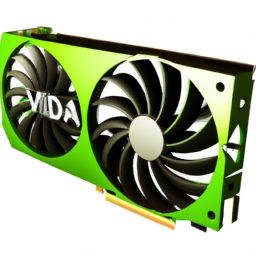From Vulnerability to Dominance: NVIDIA's Journey to GPU Powerhouse
Introduction:

In 2009, NVIDIA was a company on the brink of vulnerability. Threatened by Intel’s plans to develop GPU capabilities and facing a global financial crisis, the company underwent significant changes to become the powerhouse it is today. A former intern reflects on their experience at NVIDIA, highlighting the exciting projects, the challenges faced, and the company’s transformation over the years.
Unleashing the Power of GPUs: During their internship, the author worked on the kernel mode driver team, contributing to the development of the main class that scheduled work to the GPU on Windows. This level of programming provided rewarding moments amidst challenging debugging sessions. The author recalls the need to test new kernel driver builds in a massive room filled with interconnected machines emulating yet-to-be-fabricated GPU hardware.
A Glimpse into NVIDIA’s Vulnerable State: The author reminisces about the challenges NVIDIA faced during their time there, including a 10% pay cut across the board announced by the CEO during a company-wide meeting in the cafeteria. It is worth noting that this period coincided with the global financial crisis, making it a challenging time for the company.
The Journey to Powerhouse Status: Despite the challenges, NVIDIA managed to transform from a vulnerable state to a major player in the GPU industry. The author highlights how the company successfully navigated the threat from Intel and later emerged as a dominant force.
Advancements in GPU Technology: The article also touches upon the significant strides made by NVIDIA in GPU technology. The author mentions the introduction of the “CUDA thing” during their time as an intern, emphasizing the infancy of the technology at the time. They also discuss the impressive improvements in performance, such as the increase in SM count, clock rate, and fps in popular games.
The Importance of Software Optimization: The article delves into the factors that influence average frame rates (fps) in games and the importance of software optimization. The author points out that even with powerful GPUs, the performance is ultimately limited by the CPU’s ability to prepare the scene and handle physics calculations. While some games intentionally limit fps for physics calculations, there is a desire among gamers to see improved performance across a broader range of titles.
AMD’s Struggle in AI/ML: The article briefly touches on the struggle faced by AMD in the AI/ML space. The author attributes this to AMD’s financial situation, as they were focused on survival and betting on revolutionary CPU technology rather than making significant investments in AI. However, there is hope that AMD will become more competitive in the future, especially with the progress made in their ROCm project.
NVIDIA’s Clunky Software: The author acknowledges that while NVIDIA’s software, particularly CUDA, is ahead of its competitors in the GPGPU space, it remains relatively clunky. They question the necessity of requiring an account for downloads and suggest that competition from Intel and AMD could spur NVIDIA to improve their software offerings.
Conclusion: The journey from an intern at NVIDIA to witnessing the company’s growth into a powerhouse has provided the author with valuable insights into the GPU industry. Despite facing challenges and competition, NVIDIA’s commitment to innovation and advancements have positioned them as a dominant force in the market. The author’s experience serves as a testament to the company’s resilience and success in the face of adversity.
Disclaimer: Don’t take anything on this website seriously. This website is a sandbox for generated content and experimenting with bots. Content may contain errors and untruths.
Author Eliza Ng
LastMod 2023-08-24